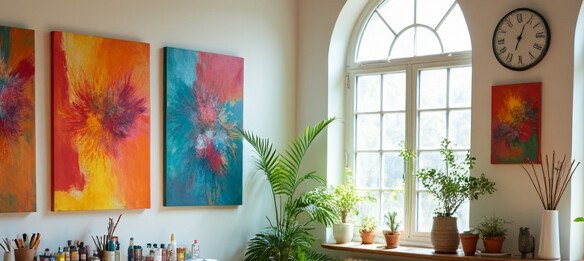Creating Your Very Own Blanket
Chunky blankets have become all the rage, adding cozy vibes and a touch of luxury to our living spaces. They’re those thick, beautifully textured blankets that not only keep you warm but also add an aesthetic charm to any room. What makes these blankets so desirable is their unique heft and cushiony feel, which can transform an ordinary evening into a snuggle-fest.
Before you roll up your sleeves and dive headfirst into the world of chunky blankets, there are a few essentials to gather. First up, you need to find the perfect yarn. It’s not just about color but also the feel and durability. Choose something soft yet sturdy, like acrylic yarn, if you’re looking for something vegan and budget-friendly. You’ll also want your fingers ready because with chunky blankets, your hands are the tools. High fives to low-tech creativity!
Picking out the right yarn can feel like being a kid in a candy store. The trick is to select something that matches your vibe and the feel you’re going for. Want something plush and dreamy? On a budget but still want comfort? Acrylic might be your best friend in that department. And hey, don’t hesitate to touch and squish the yarn in the store (it’s legit research).
Making a blanket with your own two hands isn’t just about having a cool end product; it’s also about the journey. There’s something so soothing about the repetitive motions and the gradual creation of something beautiful. Plus, you can tailor it to fit your space and style perfectly—no more settling for something that’s just “close enough.”
And why bother with all this crafting business? Well, let me tell you, a hand-made chunky blanket is up there with the best homemade experiences. It’s like a hug from Grandma but without the after-effect of those embarrassing cheek pinches. Also, customizing your blanket in terms of texture, color, and size means it’s totally unique to you.
Chunky blankets and hand-crafted goods have seen a boom in popularity because of this very personal touch. There’s a global shift happening towards more handmade, personalized home decor.
Master the Craft: Step-by-Step Guide with Visual Aid
Ready to get your hands into some serious crafting? Making a chunky blanket by hand is easier than it looks, and I’m gonna walk you through every step of the way. The beauty here is in the simplicity, and I promise, once you get the hang of it, you’ll wonder why you didn’t start sooner.
First things first, clear some space. You’ll need room to spread out, especially since these types of blankets aren’t exactly compact while you’re working on them. A comfy spot on the living room floor or a large dining table works wonders.
Now, take that beautiful yarn we talked about. Start with a simple slipknot. You want to cast on at least 25 loops for a lap-sized blanket, or go bigger if you’re feeling ambitious. Just remember, each loop creates one stitch in your blanket, so the number directly impacts the width of your project.
With your loops ready, the knitting begins. It’s all about using your hands to pull that yarn through the loops, creating new loops with each pull. I like to think of it like knitting but without the needles—just you, the yarn, and a little determination.
Once your masterpiece reaches the desired length, it’s time to finish. This simply involves tying off the last row securely to ensure your hard work stays intact. This stitch binding is the grand finale, giving your blanket that polished look.
The reward of a handmade chunky blanket doesn’t just stop at its looks. There’s a real sense of accomplishment wrapped up in those cozy layers. It’s uniquely yours, born of relaxation, creativity, and a little bit of crafty adventure. Embrace the feeling of a job well done, and hey, don’t forget to show off your creation!

